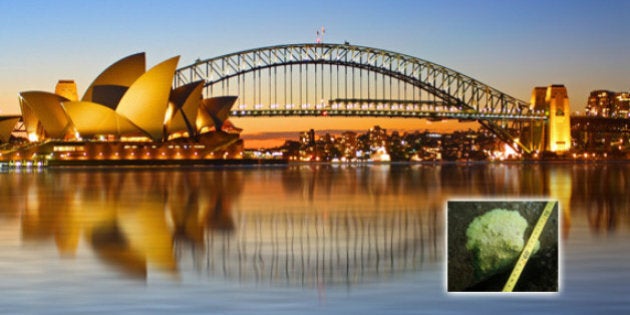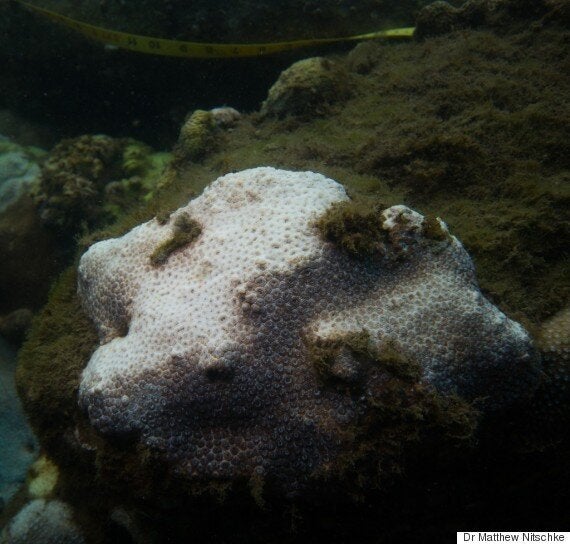
It may come as a surprise that Sydney Harbour has long been home to corals but this year, hot conditions have devastated the once-thriving colonies.
Despite growing in comparatively cool southern waters, these soft corals have been hit by this year's devastating coral bleaching event, and a new study found areas where 45 percent of corals have been bleached.
The joint marine biology research project between the University of Technology Sydney and Macquarie University also found this was the first time coral bleaching had been recorded in Sydney.

Red coral turned a ghostly white.
An El Nino season in 2015-16 brought warmed water down the East Australian Current, leaving a trail of bleached corals with the southern extent not yet determined.
The harbour's coral has long drawn researchers to study how it has adapted to cooler waters but PhD candidate Samantha Goyen said there was little known about their adaptability to heat waves.
“Although these corals are specialists in cooler waters, what we didn’t expect was to see such a rapid change in their physiology. They appear to have bleached in a matter of weeks," Goyen said.
“In comparison to those of the Great Barrier Reef these coral populations are little studied. Scientifically there is still so much we don’t know about these corals considered to be living in an already ‘extreme environment'."
What is coral bleaching?
Coral hosts tiny algae in its tissues called zooxanthellae that produce its food as well as its colour.
When waters become too hot or cold, the coral becomes stressed and its metabolism and reproductive system break down.
At this point, it cannot process the oxygen created by the zooxanthellae, so it expels them.
If the temperature returns to normal, these tiny creatures can re-enter the tissues, or if most but not all algae have been expelled, the remaining few can keep the coral alive.
If the temperatures remain extreme and the sun continues shining, the coral dies.
There is no specific temperature threshold that tips coral into bleaching territory, rather, it's a cumulative stress.
Macquarie University Quantitative Ecology and Evolution group head Joshua Madin has been monitoring these corals since 2010 as part of a project aimed at understanding the migration of tropical corals down the NSW coastline and said it looked very different this time.
“To our knowledge, bleaching like this has never been observed in Sydney Harbour corals," Madin said.
"Where we normally see corals here with vibrant hues ranging from iridescent green to a reddish-bronze, many of them are now showing clear signs of bleaching."
Bleached corals can recover and UTS Future Reefs leader David Suggett said it was too soon to tell how this event would affect the harbour ecology.
“We are optimistic the corals can recover as conditions return to normal," Suggett said.
“However, we believe this serves as a good example of why we need to understand how organisms, like corals that are at the frontline of climate change, survive extremes and persist at the edge of their ranges.”